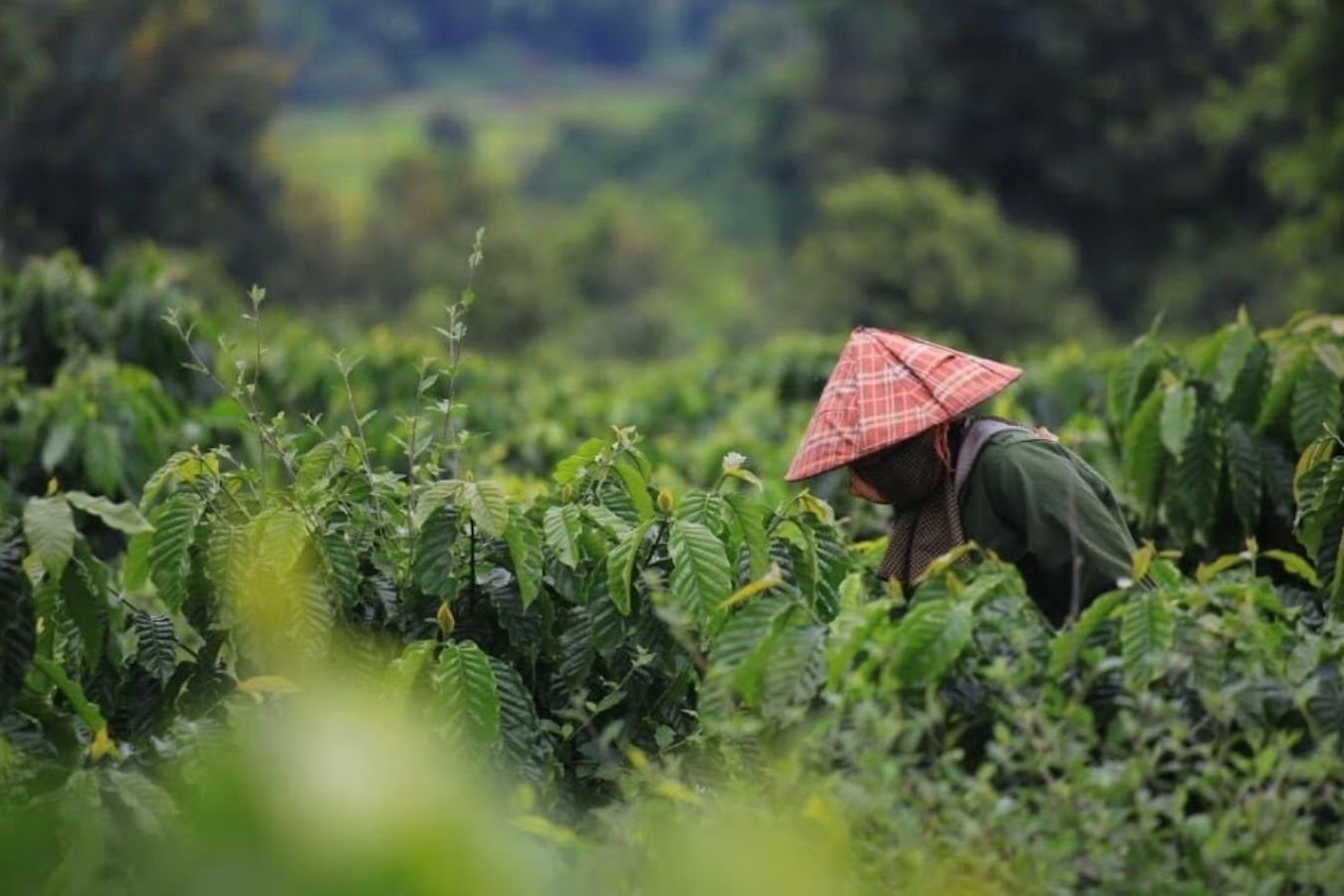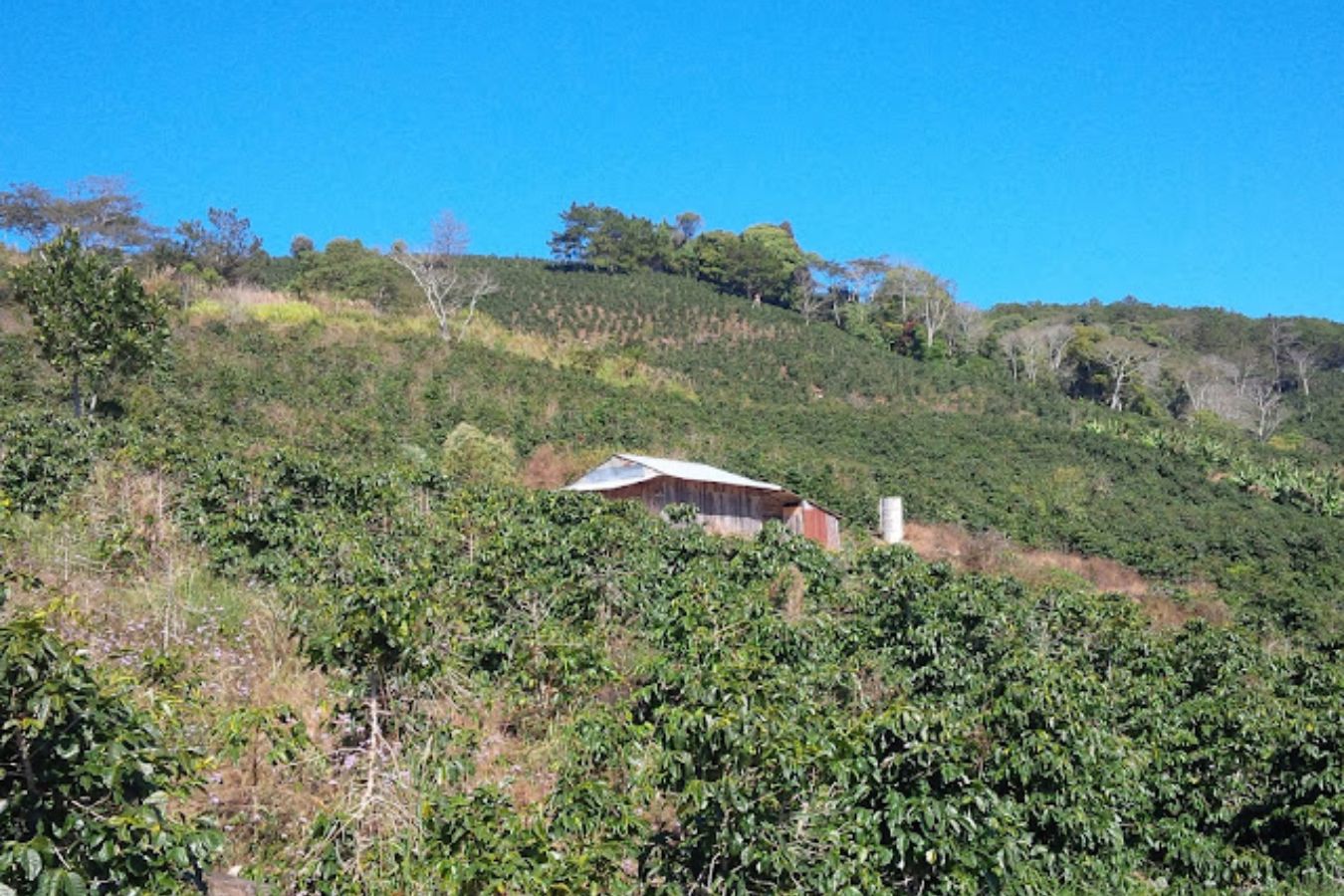
Nui Min – Since the 19th century, coffee has accompanied the French missionaries to Vietnam. Vietnam has risen in popularity and is now one of its top coffee exporters.
To attain these goals, a balance must be struck between “heavenly time, geographical advantage, and human harmony,” with the geographical location being one of the most essential and decisive aspects in marketing Vietnamese coffee.
The Central Highlands provinces with famous coffee growing areas such as Cau Dat, Nui Min, Tram Hanh (Lam Dong), and especially Buon Ma Thuot must be mentioned first for coffee growing locations in our country (Lam Dong). Dak Lak) is the world’s largest producer of Robusta coffee.

This section of the Central Highlands, also known as the Central Highlands, is fortunate to be blessed with rich basaltic red soil (2 million hectares, accounting for 60% of the country’s basaltic soil), which has good mechanical properties and the ability to retain water and nutrients. The pellet structure has an average porosity of 62-65 percent… Furthermore, these plateaus are 500-600 meters above sea level and enjoy a chilly, rainy environment. As a result, it’s ideal for Robusta coffee and a few other industrial crops.
In Vietnam, Buon Ma Thuot is known as the “Land of Early Coffee.” Before then, the French thoroughly investigated the soil, climate, altitude, ancient alluvial layer, and other factors before settling on Buon Ma Thuot as the location for a Robusta coffee specialty, with Buon Ma Thuot as the centre within a radius.
Ea Kao, Etam, Tan Lap, Tan Hoa, Tan An, Tan Loi, Cu But, and some more districts: Cu Mgar, Krong Ana… all produce good physical quality Robusta coffee. In this location, Robusta is the best choice for increasing the strength of Espresso (Milano origin), but only in limited amounts.
Buon Ma Thuot has received a lot of attention and investment from the state to develop the infrastructure because it is one of the eight first-class cities directly under the province. It is also a strategic city, essential for national security and defence, so it has received a lot of attention and investment from the state to develop the infrastructure.
With the country’s most significant Robusta coffee production, helping to propel Vietnam’s coffee export output to the top of the globe and offering a coffee product of the highest quality and distinctive flavour. As a result, Buon Ma Thuot is the “coffee capital.”
Despite their shared location in the Central Highlands, the coffees of Lam Dong province’s Cau Dat, Nui Min, and Tram Hanh are distinct. Arabica coffee’s enticing aroma is well-known around the world. These regions of Lam Dong are prime and ideal areas for Arabica varietals to grow and produce, with a height of over 1,500 m above sea level, many gently sloping hills, and a calm environment. The world’s highest-quality coffee beans. Cau Dat coffee, in particular, is known as the “Queen” of coffees due to its unique alluring aroma.

Khe Sanh (Quang Tri) is another well-known Arabica and Catimor (jackfruit coffee) growing region, with a suitable altitude and a plain exposed to the Laotian winds blowing from the central desert. The bravest and most tenacious people in Vietnam are the ones who make the fields dry and the grass burn. In addition, our country is home to the Northwest Arabica coffee region, which has a long history. Although the products are less expensive than those from the Central Highlands areas, they add to Vietnamese coffee’s fuller flavour.
Aside from the typical coffee-growing regions mentioned above, Vietnam is also known for coffee in Dak Mil of Dak Nong, which has up to 19,000 hectares of coffee, accounting for a quarter of the district’s area and producing up to 42,930 tons, accounting for one-third of the province’s total coffee output. The sweet and sour Dak Mil coffee adds thought and depth to the table, while Dak Ha coffee brings joy and warmth.
Gia Lai is recognized for Chu Se coffee, which is grown in a district 40 kilometres south of Pleiku city, covering 12,000 hectares and bringing the flavor of coffee to a boil. In addition, this province has several high-yielding and high-quality coffee-growing areas, such as Chu Pa, Ia Sao, and An Khe…